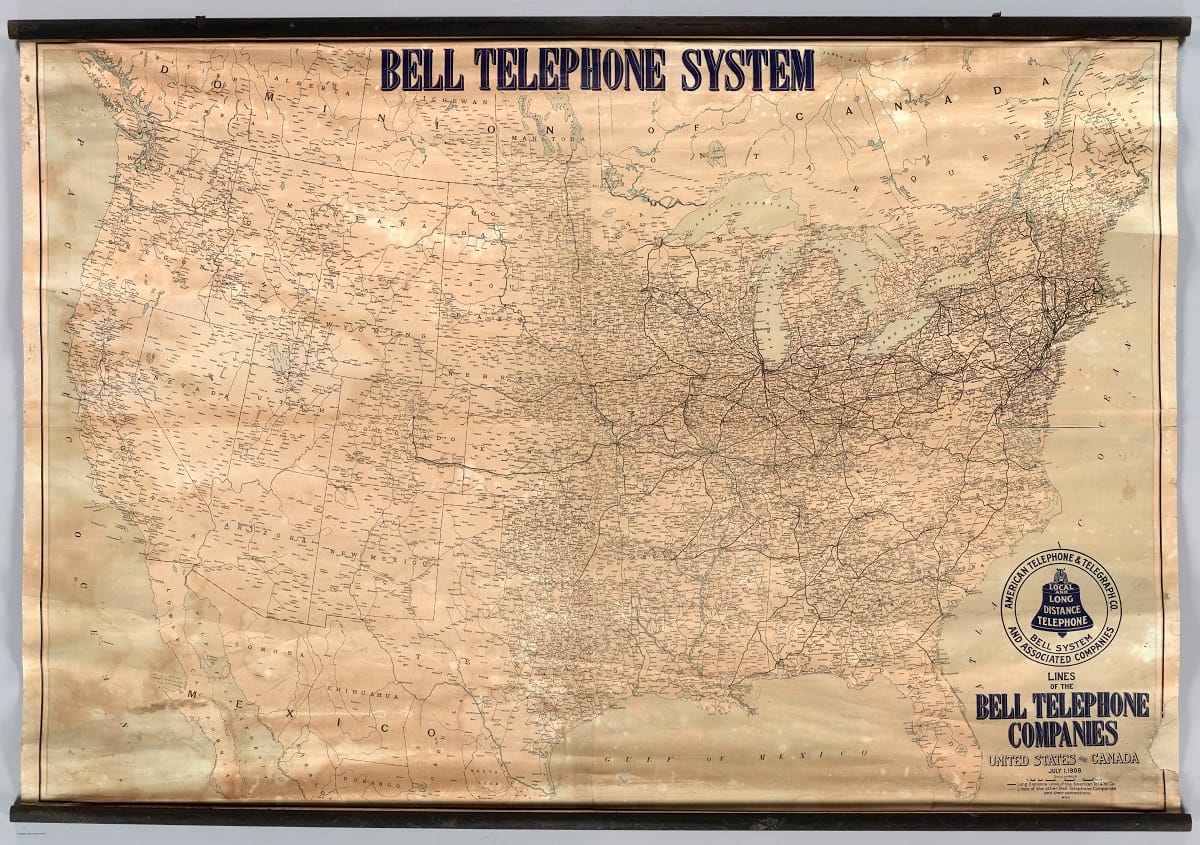Look at this 1910 Map of AT&T’s Telephone Wires, an Early Version of ‘Broadband Mapping’
BROADBAND BREAKFAST INSIGHT: A great visual tidbit of history here. We found it when searching for information about the regulation of AT&T from the 1913 Kingsbury Commitment to the founding of the Federal Communications Commission in 1934. A Telephone Map of the United States Shows Where You Could

BROADBAND BREAKFAST INSIGHT: A great visual tidbit of history here. We found it when searching for information about the regulation of AT&T from the 1913 Kingsbury Commitment to the founding of the Federal Communications Commission in 1934.
A Telephone Map of the United States Shows Where You Could Call Using Ma Bell in 1910, from Slate:
There were 5.8 million telephones in the Bell/AT&T network in 1910, when this map was published. It shows the uneven development of early telephone service in the United States, and gives us a sense of which places could speak to each other over Bell’s long-distance lines in the first decade of the 20th century.
The Bell Telephone Company, which was founded in 1877, faced some competition early on from Western Union, but then enjoyed a virtual monopoly on telephone service until 1894, when some of Bell’s patents expired. Sociologist Claude Fischer writes of the years after that expiration: “Within a decade literally thousands of new telephone ventures emerged across the United States.” Some of those independents went into rural areas that Bell had not covered, because the company had focused on developing service in the business centers of the East Coast.
By the time this map was printed, Bell had tried several different strategies, clean and dirty, to fight back against its competition, including (Fischer writes) “leveraging its monopoly on long-distance service,” pursing patent suits, controlling vendors of telephone equipment, and simply using its deep pockets to outlast smaller companies that tried to enter the market.
[more…]
Source: History of the American telephone system: Map of Bell coverage in 1910.










Member discussion